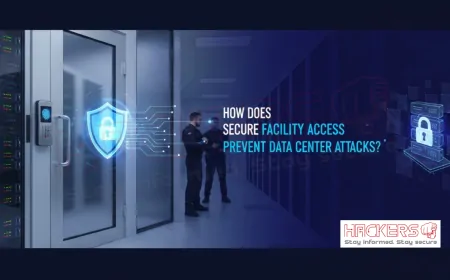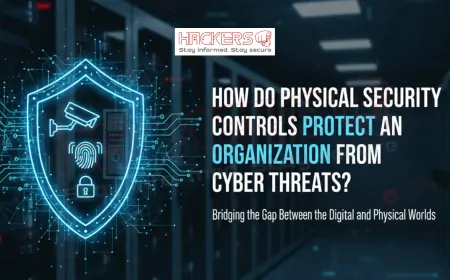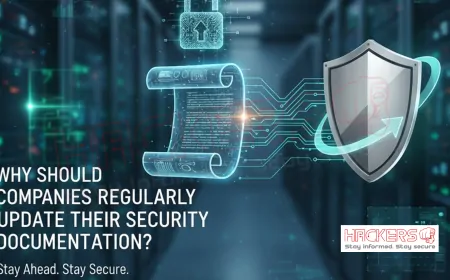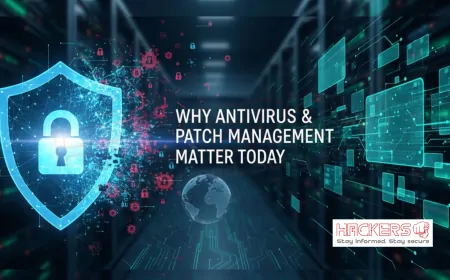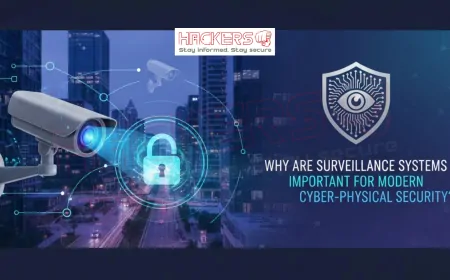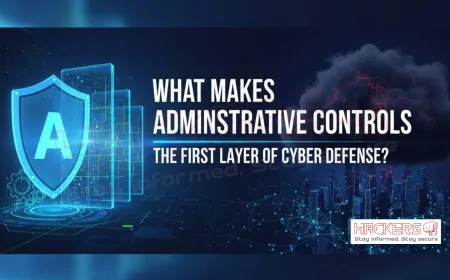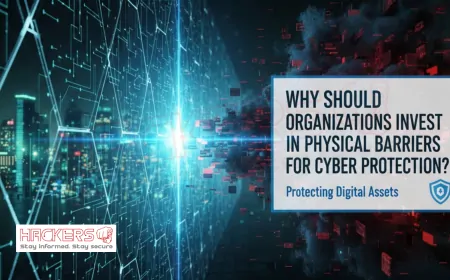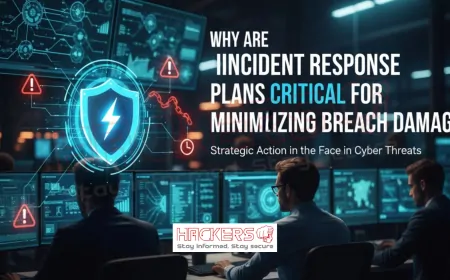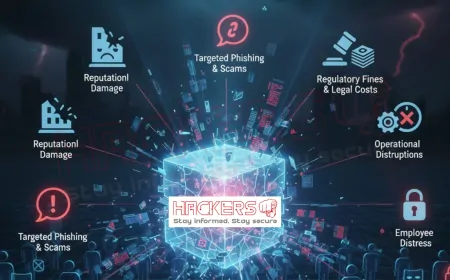What Makes Administrative Controls the First Layer of Cyber Defense?
In today's digital world, where data breaches and cyber attacks make headlines almost daily, protecting our online assets has never been more important. Imagine your organization's network as a fortress. Before you install high-tech alarms or build thick walls, you need a solid plan: rules for who enters, training for guards, and strategies to spot threats early. That's where administrative controls come in. They form the foundational layer of cyber defense, setting the stage for everything else. In this blog post, we'll explore why these controls are the starting point for any strong cybersecurity strategy, breaking it down in simple terms so even beginners can grasp the concepts. We'll look at their key elements, benefits, and how they fit into the bigger picture of protecting against cyber threats.
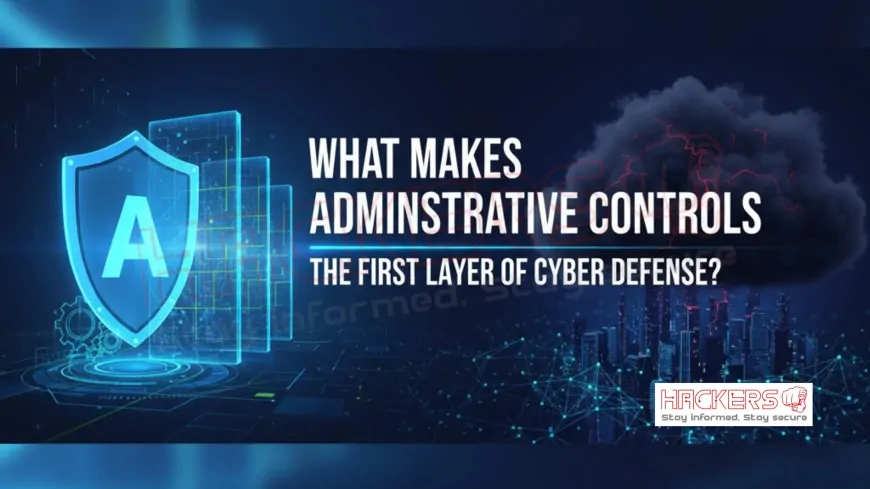
Table of Contents
- Understanding Administrative Controls
- Why Administrative Controls Are the First Layer
- Key Components of Administrative Controls
- Comparing Administrative Controls to Other Layers
- Benefits of Strong Administrative Controls
- Challenges in Implementing Administrative Controls
- Real-World Examples and Case Studies
- Best Practices for Effective Administrative Controls
- Conclusion
- FAQs
Understanding Administrative Controls
Administrative controls are the policies, procedures, and guidelines that organizations put in place to manage and reduce cybersecurity risks. Think of them as the rulebook for how everyone in a company should handle data and technology. Unlike firewalls or antivirus software, which are technical tools, administrative controls focus on the human side of security. They include things like employee training programs, access policies, and regular audits.
Why do we need them? Cyber threats often exploit human errors, such as clicking on a suspicious link or sharing passwords. Administrative controls help prevent these mistakes by educating people and establishing clear expectations. For instance, a simple policy requiring strong passwords can stop many unauthorized access attempts. These controls are not about fancy gadgets; they are about creating a culture of security awareness.
In essence, administrative controls lay the groundwork. They define what is acceptable behavior in the digital space and ensure that everyone knows their role in protecting information. Without them, even the best technical defenses can fail because people might not use them correctly. This layer is proactive: it aims to stop problems before they start by shaping how an organization operates daily.
To put it simply, if cybersecurity is a multi-layered cake, administrative controls are the base layer that holds everything together. They ensure that the other layers, like technical and physical protections, are built on a stable foundation. Beginners might wonder why we start here instead of jumping straight to software solutions. The answer lies in the fact that technology alone cannot account for human variability. Policies and training address that gap effectively.
Why Administrative Controls Are the First Layer
In the hierarchy of cybersecurity defenses, administrative controls come first because they address the root causes of many vulnerabilities: people and processes. Cybersecurity frameworks, such as those from NIST or ISO, often emphasize starting with governance and risk management. This means assessing threats, setting policies, and training staff before implementing tools.
Consider a scenario where a company installs advanced firewalls but has no policy on remote access. Employees might connect from unsecured networks, bypassing the firewall's benefits. Administrative controls prevent such oversights by establishing rules first. They create a framework where technical controls can be effective.
Moreover, these controls are cost-effective. Developing policies and conducting training sessions often costs less than purchasing and maintaining hardware. For small businesses or beginners in cybersecurity, this makes them an accessible entry point. They also promote compliance with laws and regulations, like GDPR or HIPAA, which require documented procedures.
Another reason they are the first layer is their adaptability. Threats evolve quickly, and administrative controls allow organizations to update policies rapidly without overhauling systems. For example, during a rise in phishing attacks, a quick training update can alert staff immediately. This flexibility ensures ongoing protection in a changing landscape.
Ultimately, starting with administrative controls builds a security-minded culture. When employees understand why security matters, they become the first line of defense themselves. This human element is crucial, as statistics show that over 80% of data breaches involve human error. By prioritizing this layer, organizations reduce risks at the source.
Key Components of Administrative Controls
Administrative controls encompass several elements that work together to strengthen cyber defense. Let's break them down.
- Risk Assessment: This involves identifying potential threats and vulnerabilities. Organizations evaluate their assets, like data and systems, to understand what needs protection. Regular assessments help prioritize risks and guide policy development.
- Policies and Procedures: These are written documents outlining rules for data handling, access, and incident response. For example, an acceptable use policy might specify what employees can do on company networks.
- Training and Awareness Programs: Educating staff on cybersecurity best practices is vital. Workshops, simulations, and newsletters keep everyone informed about threats like phishing or social engineering, where attackers trick people into revealing information.
- Access Management: This controls who can access what information. Using principles like least privilege, employees get only the access needed for their jobs, reducing the impact of potential breaches.
- Audits and Monitoring: Regular reviews ensure compliance with policies. This includes logging activities and investigating anomalies to catch issues early.
- Incident Response Planning: A predefined plan for handling breaches minimizes damage. It outlines steps like notifying authorities and restoring systems.
Each component reinforces the others, creating a comprehensive approach. For beginners, starting with basic policies and training can make a big difference without overwhelming complexity.
Comparing Administrative Controls to Other Layers
Cybersecurity defenses are often divided into three layers: administrative, technical, and physical. Understanding how they differ helps highlight why administrative controls are foundational.
| Layer | Description | Examples | Why It Follows Administrative |
|---|---|---|---|
| Administrative | Focuses on policies, training, and management. | Security policies, employee training, risk assessments. | Sets the rules and culture needed for other layers to work. |
| Technical | Involves software and hardware tools. | Firewalls, encryption, antivirus software. | Relies on policies to guide implementation and use. |
| Physical | Protects physical access to assets. | Locks, security cameras, badge systems. | Supported by procedures for access control and monitoring. |
As the table shows, administrative controls provide the blueprint. Technical controls, like firewalls, block unauthorized traffic, but without training, users might disable them accidentally. Physical controls prevent theft of devices, but policies ensure sensitive data isn't left unsecured. This layered approach, starting with administrative, creates depth in defense.
Benefits of Strong Administrative Controls
Implementing robust administrative controls offers numerous advantages. First, they reduce the likelihood of breaches by addressing human factors. Trained employees are less likely to fall for scams, leading to fewer incidents.
They also enhance compliance. Many industries face strict regulations, and well-documented policies demonstrate due diligence, avoiding fines. For example, healthcare organizations must protect patient data under laws like HIPAA.
Cost savings are another benefit. Preventing attacks is cheaper than recovering from them. Administrative controls help allocate resources efficiently through risk assessments.
Additionally, they foster trust. Customers and partners feel safer knowing an organization prioritizes security. This can improve reputation and business opportunities.
Finally, these controls promote a proactive mindset. Instead of reacting to threats, organizations anticipate them, staying ahead in the cyber landscape.
Challenges in Implementing Administrative Controls
While beneficial, setting up administrative controls isn't without hurdles. One common issue is resistance from employees. People might see new policies as burdensome, leading to non-compliance.
Resource limitations pose another challenge, especially for small businesses. Developing comprehensive programs requires time and expertise, which might be scarce.
Keeping controls up-to-date is tricky too. Cyber threats change rapidly, so policies need regular reviews, which can be overlooked in busy environments.
Measuring effectiveness is not straightforward. Unlike technical tools with metrics, administrative controls rely on qualitative assessments, like employee feedback.
Overcoming these involves starting small, communicating benefits clearly, and integrating controls into daily routines gradually.
Real-World Examples and Case Studies
To illustrate the importance of administrative controls, consider the 2017 Equifax breach. Hackers exploited a known vulnerability, but the lack of timely patching procedures, an administrative failure, allowed the attack. Millions of records were exposed, showing how weak policies amplify risks.
In contrast, companies like Google emphasize training and policies. Their "Security Princess" program educates employees playfully, reducing errors. This approach has helped maintain strong defenses.
Another example is the SolarWinds attack in 2020. Supply chain vulnerabilities were exploited, but organizations with robust incident response plans recovered faster. These cases underscore that administrative controls can mitigate damage even when technical defenses falter.
Small businesses can learn from these. A local retailer implementing password policies and training avoided a phishing scam that targeted similar stores, saving potential losses.
Best Practices for Effective Administrative Controls
To make administrative controls work well, follow these practices.
- Conduct thorough risk assessments regularly to identify evolving threats.
- Develop clear, concise policies that are easy to understand and follow.
- Provide ongoing training tailored to different roles within the organization.
- Enforce access controls strictly, reviewing permissions periodically.
- Perform audits and simulations to test readiness.
- Involve leadership to model security behaviors.
- Update plans based on lessons from incidents or industry news.
By adopting these, even beginners can build a solid foundation.
Conclusion
In summary, administrative controls serve as the first layer of cyber defense by establishing the policies, training, and procedures that guide all other security efforts. They address human elements, promote compliance, and provide adaptability in a fast-changing threat environment. While challenges exist, the benefits of reduced risks, cost savings, and enhanced trust make them essential. By starting here, organizations create a strong, layered approach to cybersecurity that protects against a wide range of threats. Whether you're a beginner or seasoned professional, prioritizing administrative controls is key to building resilient defenses.
What are administrative controls in cybersecurity?
Administrative controls are the policies, procedures, and guidelines that manage how people interact with technology to reduce security risks. They include training, access rules, and risk assessments.
Why are administrative controls considered the first layer?
They form the foundation by setting rules and educating people, ensuring that technical and physical controls are used effectively from the start.
How do administrative controls differ from technical controls?
Administrative controls focus on human behavior and processes, while technical controls involve tools like software and hardware to protect systems directly.
What role does training play in administrative controls?
Training educates employees on threats and best practices, helping prevent errors that could lead to breaches.
Can small businesses implement administrative controls easily?
Yes, they can start with basic policies and free training resources, scaling up as needed without high costs.
What is risk assessment in this context?
Risk assessment identifies potential threats and vulnerabilities, guiding the development of targeted controls.
How often should policies be updated?
Policies should be reviewed at least annually or after significant incidents or changes in threats.
What is the principle of least privilege?
It means giving users only the access necessary for their jobs, minimizing potential damage from breaches.
Why are audits important?
Audits ensure compliance and identify weaknesses, allowing for timely improvements.
What happens without strong administrative controls?
Organizations face higher risks of breaches due to human errors and inconsistent practices.
How do administrative controls help with compliance?
They provide documented procedures that meet regulatory requirements, avoiding penalties.
Are administrative controls enough on their own?
No, they work best as part of a layered approach with technical and physical controls.
What is an incident response plan?
It's a step-by-step guide for handling security incidents to minimize impact and recover quickly.
How can employees contribute to administrative controls?
By following policies, reporting issues, and participating in training, they strengthen overall security.
What challenges do organizations face with these controls?
Common issues include employee resistance, resource shortages, and keeping up with evolving threats.
Can administrative controls prevent all cyber attacks?
No, but they significantly reduce risks by addressing common vulnerabilities at the source.
How do case studies show their importance?
Breaches like Equifax highlight failures in policies, while successful companies demonstrate benefits from strong controls.
What best practices should beginners follow?
Start with risk assessments, create simple policies, and provide regular training to build a secure culture.
Do administrative controls apply to remote work?
Yes, they include policies for secure remote access and data handling outside the office.
How do they promote a security culture?
By involving everyone in security practices, they make protection a shared responsibility.
What's Your Reaction?









